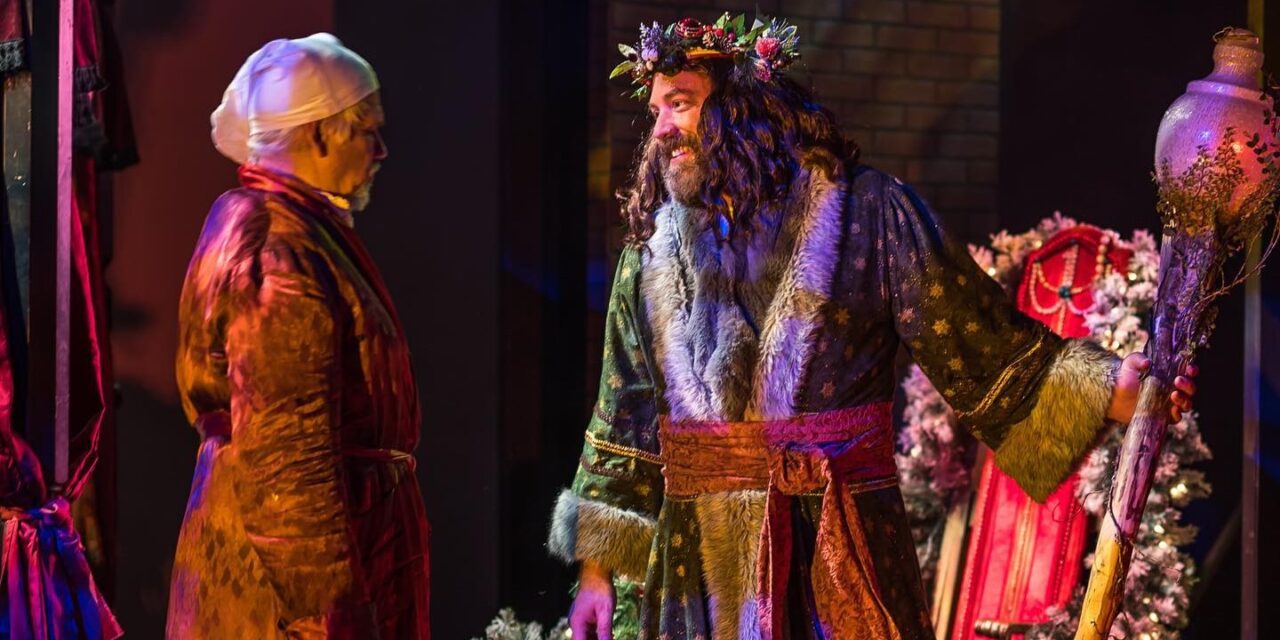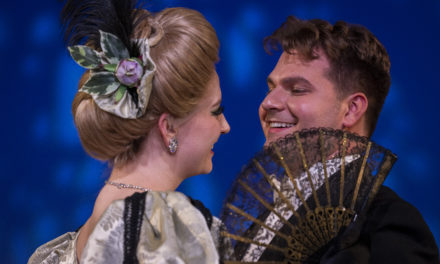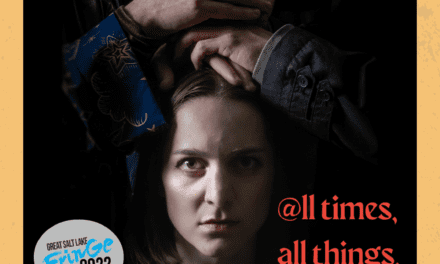SOUTH SALT LAKE — The holiday season typically inspires words such as “festive,” “merry,” and “excitement.” As I sat in the Parker Theatre on Saturday, November 19, reading the director’s note for this adaptation of A Christmas Carol by Charles Dickens, I was intrigued about director Spencer J. Hohl’s use of the word “danger.” The director’s note specifically makes mention of “the danger of ignoring the needs of others around us,” and Spencer J. Hohl’s assertation that this presentation of danger is one of the reasons the Dickens classic has been playing on stages at this time of year for nearly two centuries. The production was striking in its high-stakes danger from start to finish as a striking foil for the truly redemptive power of the story’s dramatic conclusion. It was the most complete and profound adaptation of A Christmas Carol I have ever seen.
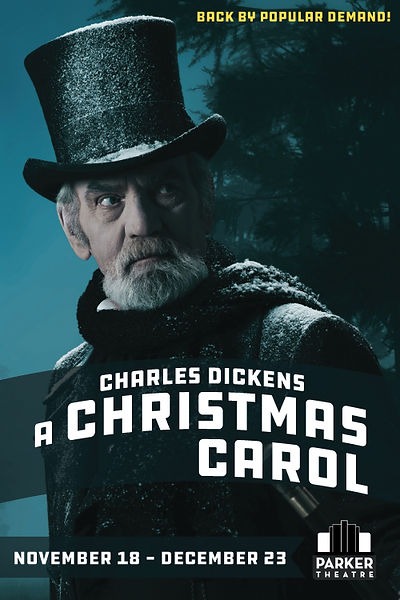
Show closes December 23, 2023.
This adaptation strayed from the canonical “Marley was dead: to begin with.” Instead, this production begins with Marley and Scrooge sitting at their desks bemoaning the Christmas time petitions of a young man whose debts are coming due. In a way that was equal parts awkwardly affable and humorlessly cold, the two men showed their utter disdain for Christmas until Marley died at his desk. The change added a weight to both men that gave their later interactions power and stakes that I rarely see in the story. Each of the characters who interacts with Scrooge at the beginning shows a contrasting but harmonious response to the old miser. Some show fear or awkwardness, while others struggle to conceal contempt and disdain. Even Fred’s portrayal belied frustration and an air of resignation with his uncle. It was clear from curtain to curtain that Scrooge would not be missed if he were to die when Marley did.
For his part, Mark Knowles, who played the old man Ebeneezer Scrooge, went tit-for-tat with these terse interactions. Knowles brought bitterness to the beginning scenes without indication that there was a nice man underneath, waiting for four ghosts to change his icy heart. I was so impressed with the gradual changes that appeared in Knowles, and how often he maintained his tough outer shell. It was easy to feel like, despite a century and a half of precedent, that this may really be the time that Scrooge refused to change his ways. It made the character’s transformation at the end all the more powerful. The lightness and joy Scrooge felt brought tears to my eyes as he let his malevolent spirit go in favor of a generous one.
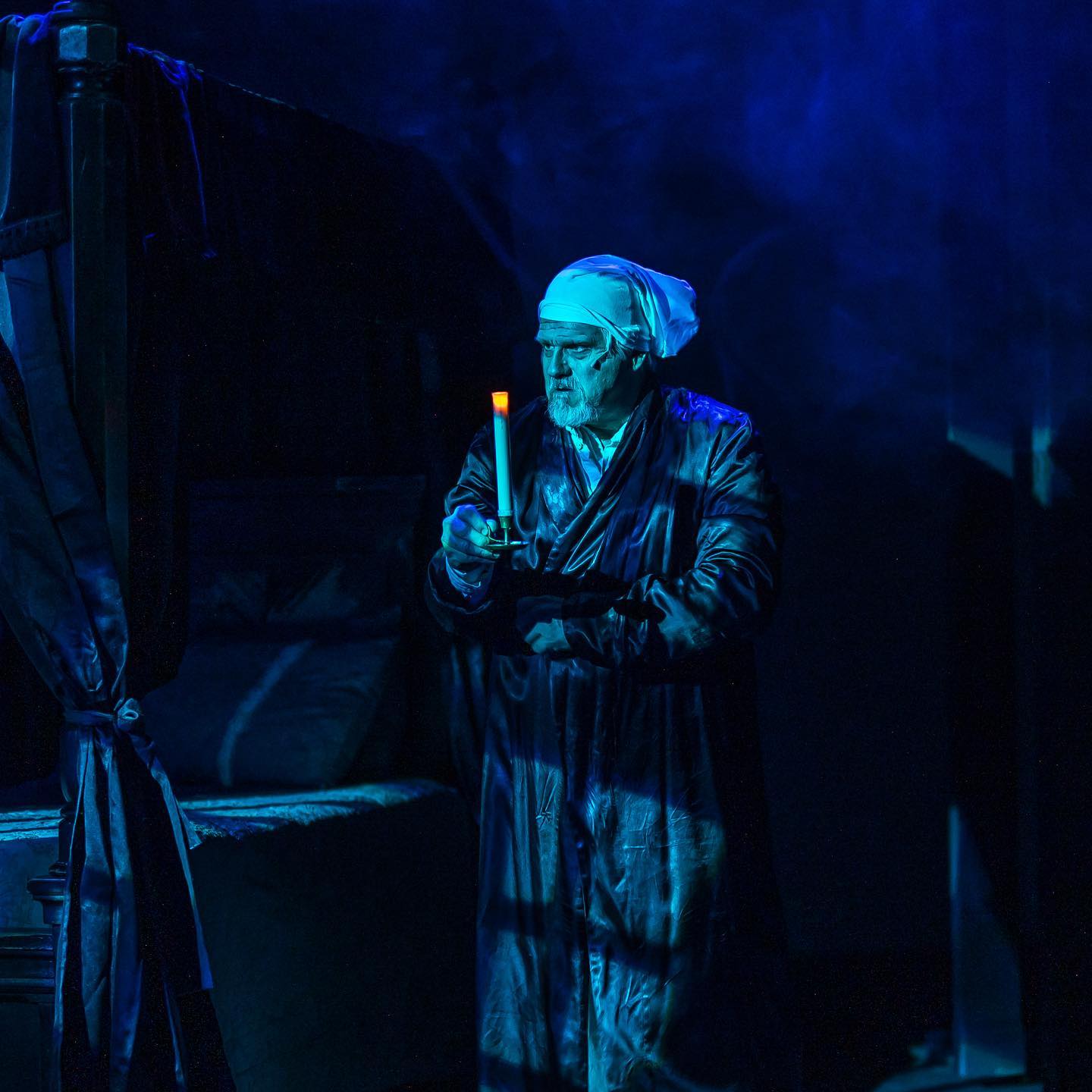
Overall, the ensemble featured strong acting across the board. Child actors Milo Stebbing (as Tiny Tim), Jago Parker (as Peter Cratchit), Jane Wilkins (as Belinda Cratchit), Eloise Hohl (as Belle’s child), and Ellie Wilkins (as Emma Cratchit and others) were well organized, did not overact on stage, and flowed well in the action of the scenes. Isabelle Purdie, whom I previously reviewed less favorably as Juliet at the Parker Theatre earlier this year, was an exceptional Belle. Her romance with young Ebeneezer seemed sincere and intentional. She had no hesitation going in for the kiss with him. Purdie’s use of subtext and physicality to tell the story in the scene where she breaks her betrothal to Ebeneezer was strong, and her anger when he is later mentioned by her husband was fierce.
Spencer J. Hohl’s direction was incredibly cohesive. While I was recently critical of the Parker’s Romeo and Juliet for not taking itself seriously, this production was the exact opposite. The ghosts made my seven-year-old a little nervous at times. Moments that needed tenderness, such as those from Scrooge’s past, were incredibly sincere. The humor still lived in the play with well-timed jokes and bits of frivolity, but the show stood well on its own.
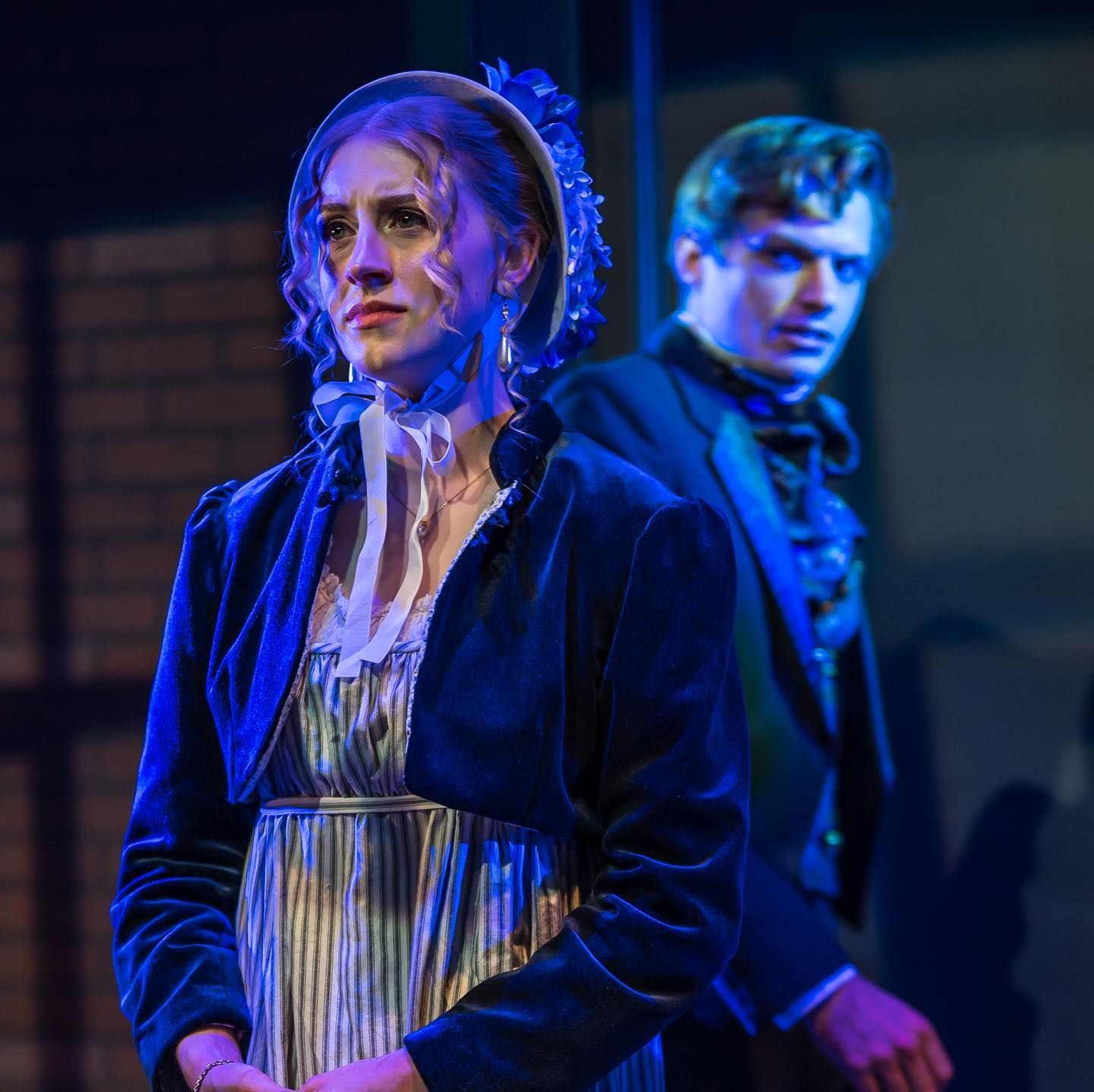
Additionally, the technical elements of the play were all phenomenal and in harmony with one another. It was the kind of play that makes my head spin as a director with how much coordination needed to happen. There were projections and lighting effects (designed by James Parker) that were incredibly well timed. One gobo effect had lights pointed at the audience that appeared to have trees on a mesh screen. As the lights rotated upstage, the scene of Tiny Tim’s grave was revealed as if it had appeared immediately from the ghost of Christmas Yet to Come.
Overall, the technical elements were impressive beause they were imperative to the story being told. I loved seeing the ways in which projection and lighting showed the passage of time, inner thoughts of characters, and heightened the dramatic tension. In several instances, single characters would appear upstage out of the darkness as lights appeared on them, creating the sense that they were Scrooge’s memory fragments. The lighting, sets and projections by James Parker beautifully wove the narrative in and out of reality, dreams and memories. The flying ghost of Christmas Past was as ethereally beautiful as the menacing third ghost was haunting.
This was a Christmas Carol I will not soon forget and one that I will not miss again. A Christmas Carol is one of the finest productions I have seen at Parker Theatre, a company that often impresses me. The show is an impressive kickoff to the holiday season for someone who, like me, tends to be a bit of a Scrooge-ish about Christmas before Thanksgiving.

These reviews are made possible by a grant from the Salt Lake County Zoo, Arts, and Parks program.

